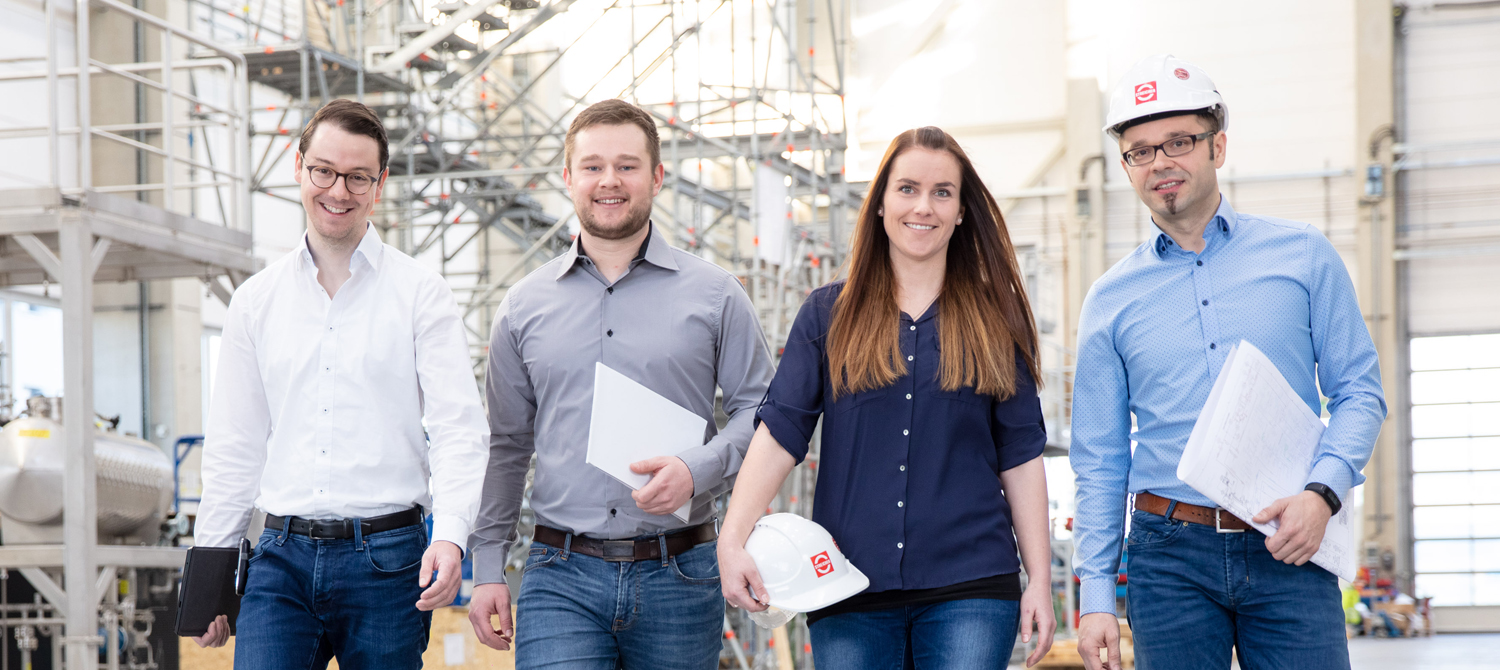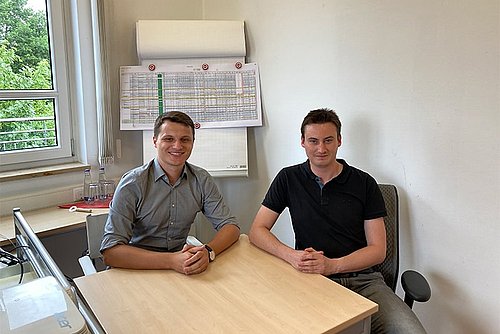My interview partner for this interesting conversation has been Fabian Kollmaier from MAX STREICHER GmbH & Co. KG aA. The STREICHER Group is an international company with its headquarters in Deggendorf, Germany. The corporate group is active in the fields of pipeline and plant construction, mechanical engineering, electrical engineering, civil engineering as well as the procurement of raw and construction materials. Fabian has been with STREICHER since 2011 and, after having trained as a technical product designer and studying industrial engineering, he is now working as a quality engineer in the department for safety, health, environment and quality management (SGU-Q). Among other things, Fabian is responsible for process management, energy and environmental management, and internal audits within the entire group of companies.
How important is the topic of sustainability at an international company that operates in the construction and mechanical engineering sector?
Sustainability has a very high priority at STREICHER. Due to our high energy-consuming processes in all our business fields, e.g. in pipeline construction or mechanical engineering, we are well aware of our responsibilities towards our employees, the environment and also toward future generations. This is why we have become members of the Bavarian Environment and Climate Pact for about 25 years. The proximity of our main headquarters here in Deggendorf to the Bavarian Forest National Park also plays an important role in this aspect. It is important to us, precisely for this reason, to protect and preserve our region and our environment the best we can – and this naturally also applies to our worldwide policies.
How is energy obtained at STREICHER?
A major item here is that we have installed photovoltaic systems on the roofs of new and old buildings both in Germany and worldwide. Many old stocks are currently being checked and evaluated to see how much more can be done here and how the photovoltaics can be expanded. In addition, STREICHER owns a total of three hydroelectric power plants, and we are currently evaluating whether we shall add one more to our system. There are also combined heat and power plants at various locations, where we try to produce our own electricity so that we can increasingly cover our internal energy consumption with renewable energies. We now replenish around 21% of our electrical energy requirements with renewable energies.
How are buildings heated at STREICHER?
Basically, we still heat a lot with classic types of heating at STREICHER, such as gas or electricity. In the meantime, however, there are more innovative solutions for many new buildings, for example concrete core activation, where buildings can be heated or cooled more energy-efficiently, using hot and cold water or heat pumps. Gas is still our main energy source when it comes to heating. Many old buildings therefore still have to be renovated and re-designed for other energy sources. We want to do this bit by bit so that we can heat more energy-efficiently and sustainably.
What does STREICHER do to reduce its ecological footprint and to offset its CO2 emissions – considering that the company’s fields of activities are in general very consumptive of energy and raw materials?
Our basic goal at STREICHER is to use our energy as efficiently as we can in order to reduce our CO2 emissions as much as possible. STREICHER’s developments and innovations play a leading role here supplementary to our endeavors in optimising our existing product range of machines. 2020, for instance, we developed an electric welding tractor, which can also be operated in environmental protection areas. This would not be admissible with fuel-powered machines. In the field of pipeline construction, where often great amounts of earth will have to be moved, it is our stated goal to return the given terrain to its original natural condition as best as we can.
Are there initiatives in the company to increase awareness among employees for the issue of sustainability (keyword: corporate culture)?
Sustainability is an integral part of STREICHER’s corporate culture, but this often has to grow as a policy in practice over decades. In training courses, instructions and information events, everyone, from trainees to long-standing employees, is given knowledge on the subject of sustainability. The success of the common endeavor is reflected in the various certificates and awards on issues of the environment, energy and sustainability. There is furthermore an energy team within the STREICHER Group, which is made up of key personnel from various departments and which explicitly deals with topics such as sustainability and resource conservation and how our employees’ awareness can be further promoted on these issues.
What measures are there at STREICHER to save electricity and energy?
We have two major areas where we implement energy-saving measures. On the one hand in the field of process optimisation and on the other in our projects of machine conversions or the development of new machines. This ranges from the conversion of lighting to LED lamps at all locations to the in-house development of new devices, such as our all-electric welding tractor. With the latter, we would like to make ourselves more independent from suppliers on the market in order to be able to react more flexibly to the market requirements. At any rate, this will be a direction of development which we would like to pursue more intensively.
What does STREICHER do at its other international locations for sustainability?
Our environmental management system ISO 50001 covers the entire STREICHER Group. This means that our international locations have to meet the same standards as in Germany, whether they are in Italy or in the Czech Republic. Our Italian location in Parma uses one of the most modern buildings in the whole group, which is fully equipped with photovoltaic systems, making it one of the most resource-efficient buildings from an energy point of view. At other locations we do often still have older buildings, which we are gradually renovating and refurbishing in order to make them more sustainable and resource-efficient.
Where would you still see room for improvement?
Potentials for improvement basically always exist. Especially when the state of the art in technology is constantly undergoing change and renewal, also in regard to the industry 4.0 concept. On the technological side, we are on the right track, particularly when it comes to our own developments. The most important items in our policies, however, are our employees. Every year we have to continuously motivate our employees and instill awareness for our policies. We believe that a lot has changed in these matters and that people are willing to pay more attention to sustainability, to implement certain items and to save electricity.
I found it very interesting in this interview to see what relevance sustainability has in practice. Especially how concepts can be implemented internationally will be of great importance. Climate change, after all, does not stop at any borders. I would also like to thank Fabian and the company of STREICHER for this great opportunity for discussion which they have given me!


